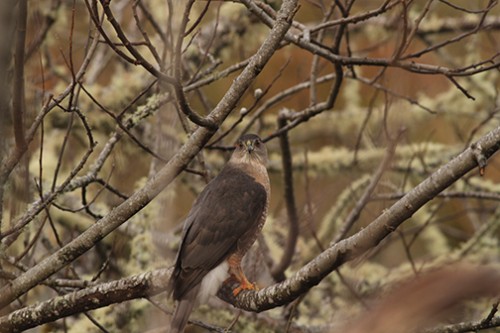Strange, it doesn’t look like a beaver dam.
But that dead alder tree, and the cavity nest in it, and the northern flickers that excavated that cavity and are now nesting in it, are all part of a system in which beavers and their dam have played a pivotal role.
Photographer Neal Maine has been visiting China Creek, on the hillside near Providence Seaside Hospital, all winter and spring, observing the work of beavers on the creek and the impact of their dam on wildlife there and below, including in North Coast Land Conservancy’s Wahanna Marsh habitat reserve (for details, read the March 17 post Everyone Lives Downstream). “The beavers are managing this little ecosystem,” Neal says. “Their dam is initiating all the resources we’re seeing here: the open water, the wetland vegetation, the rising water that causes some trees to die, the birds that nest in cavities in those dead trees.”
Hence the deer grazing among the buttercups in the creek-watered meadow. Hence the green and great blue herons fishing in the beaver-engineered wetland. Hence the adult salmon Neal photographed in late winter in a creek system that is now providing rearing habitat for juvenile salmon.
Humans are a part of this system too, Neal points out. Hospital administrators had been concerned that beaver activity was going to lead to flooding across their access road. “Totally valid concern,” Neal points out: his part was to suggest ways that a culvert could be used to avoid road flooding without draining the entire system. “I think we got pretty close,” he says of the project.
One of the best parts of all: the animals seen in these photographs aren’t “out there somewhere,” Neal points out: they are here, living alongside humans within Seaside’s city limits.
“It’s not a straight-line kind of thing; it’s not about any one species,” Neal says. Rather, “It’s about the dynamics of living resources.”










Comments